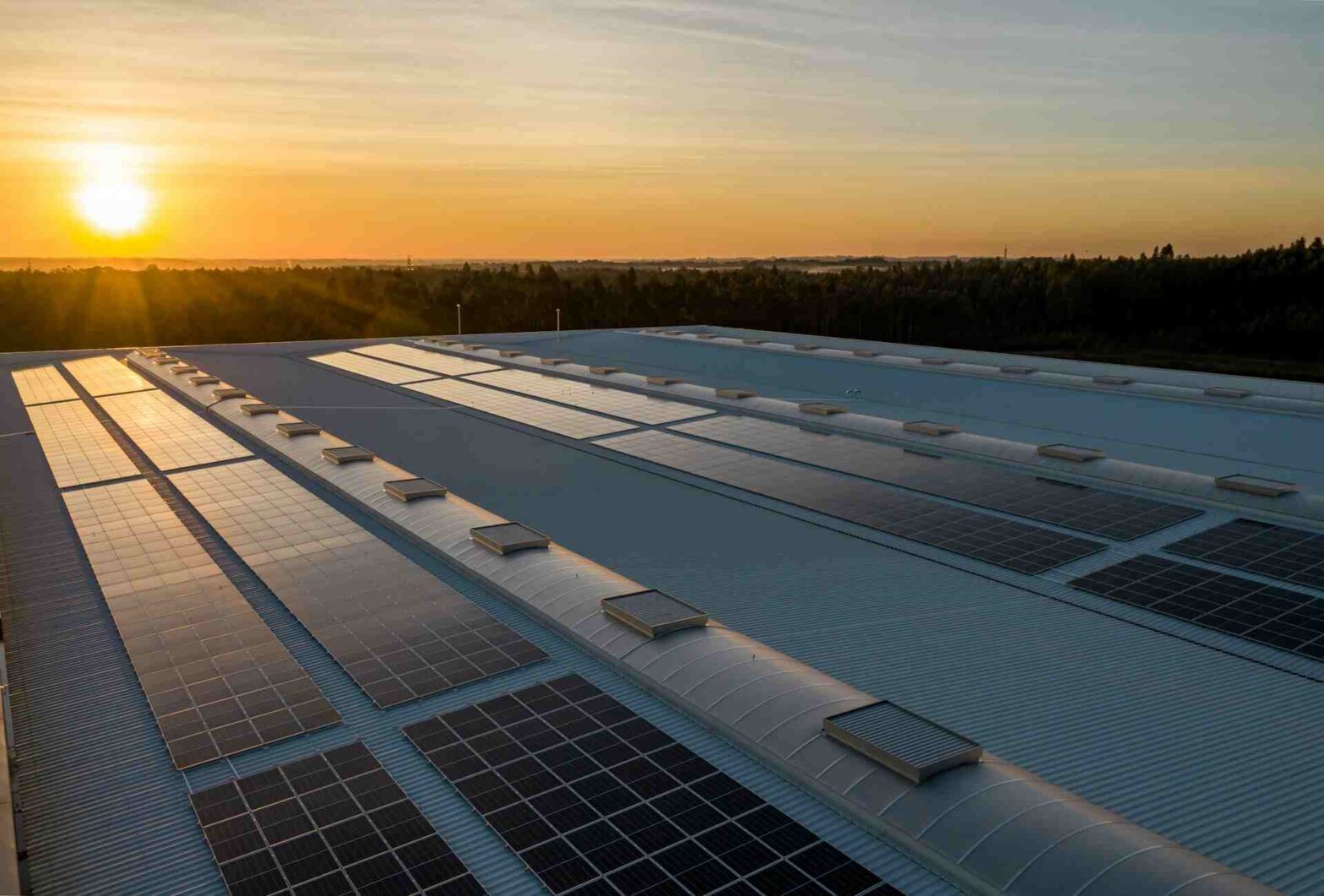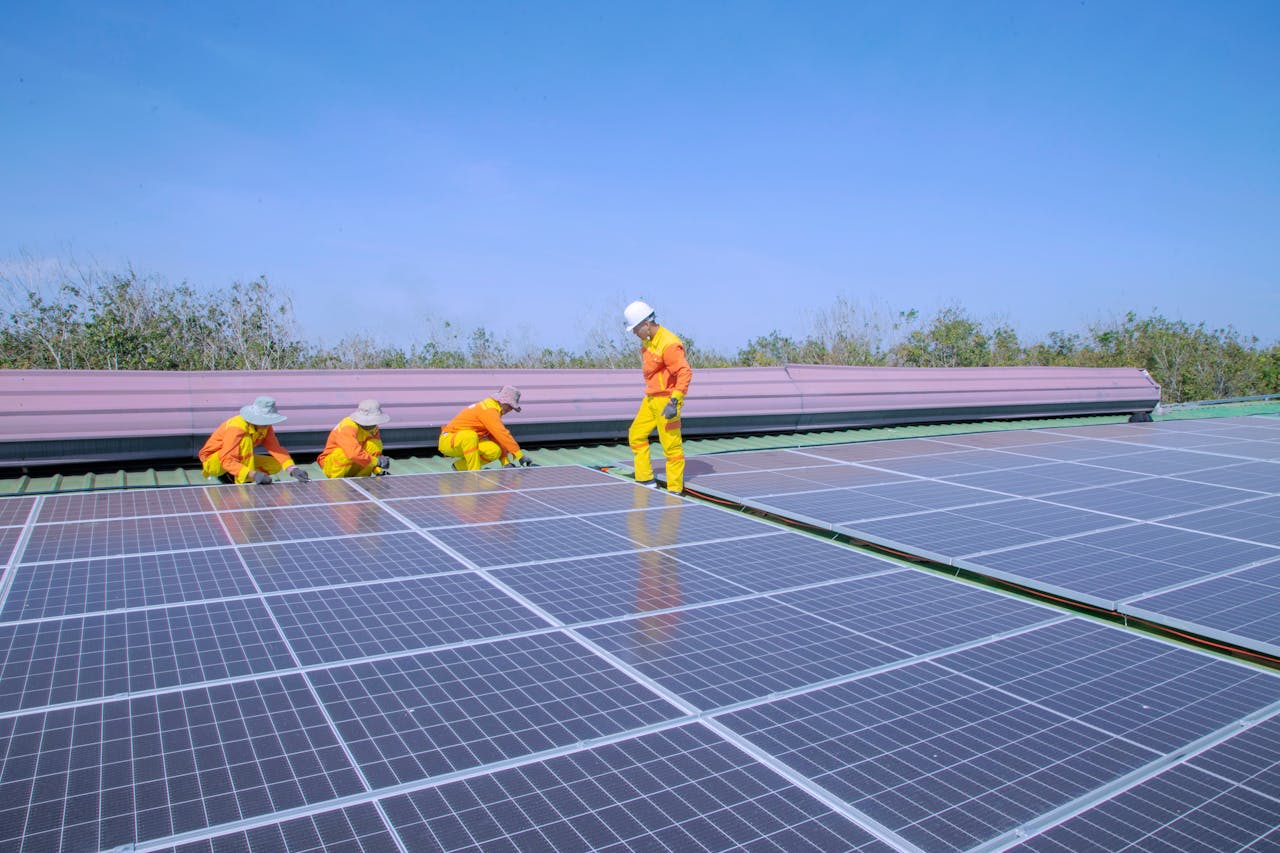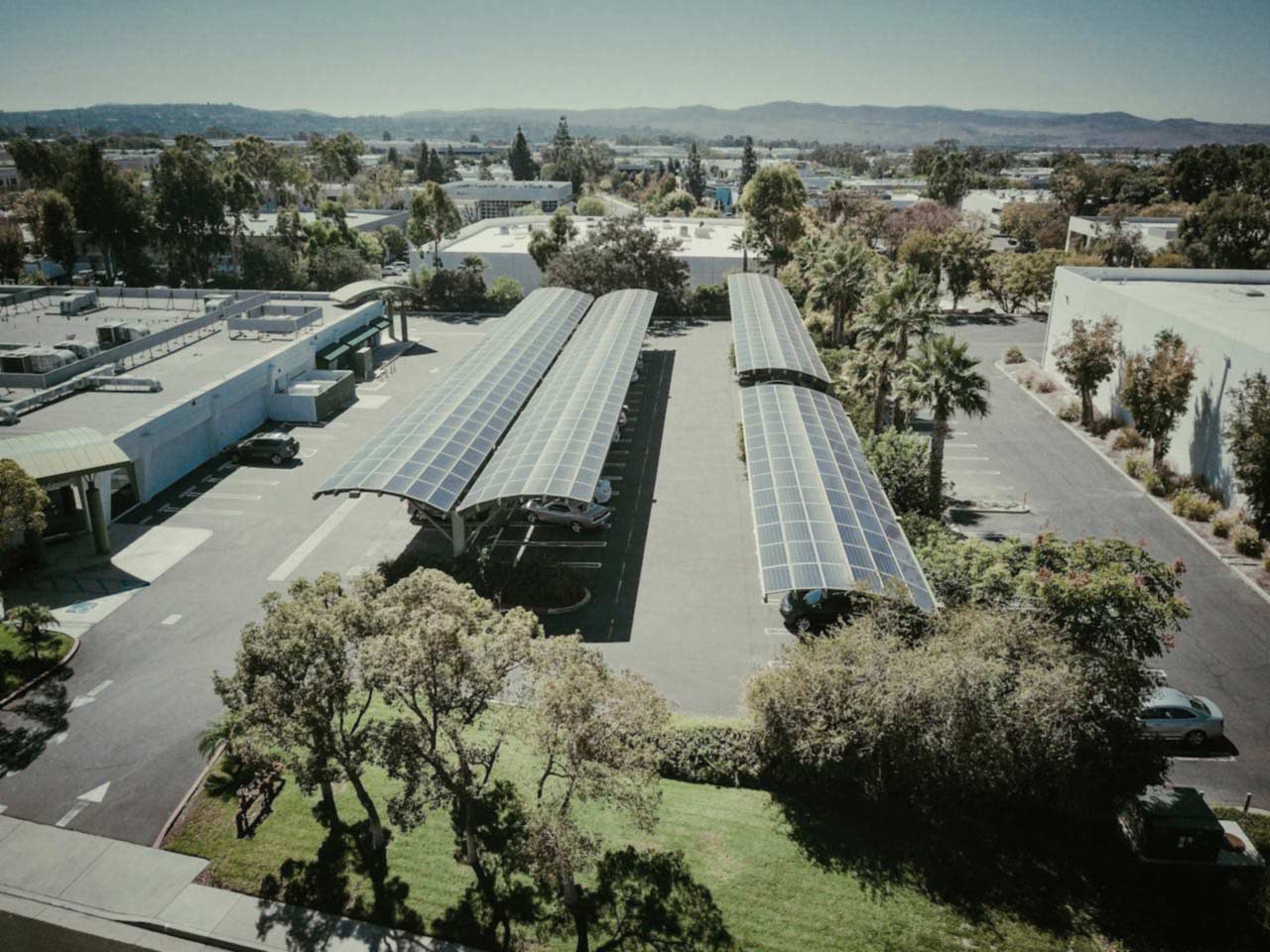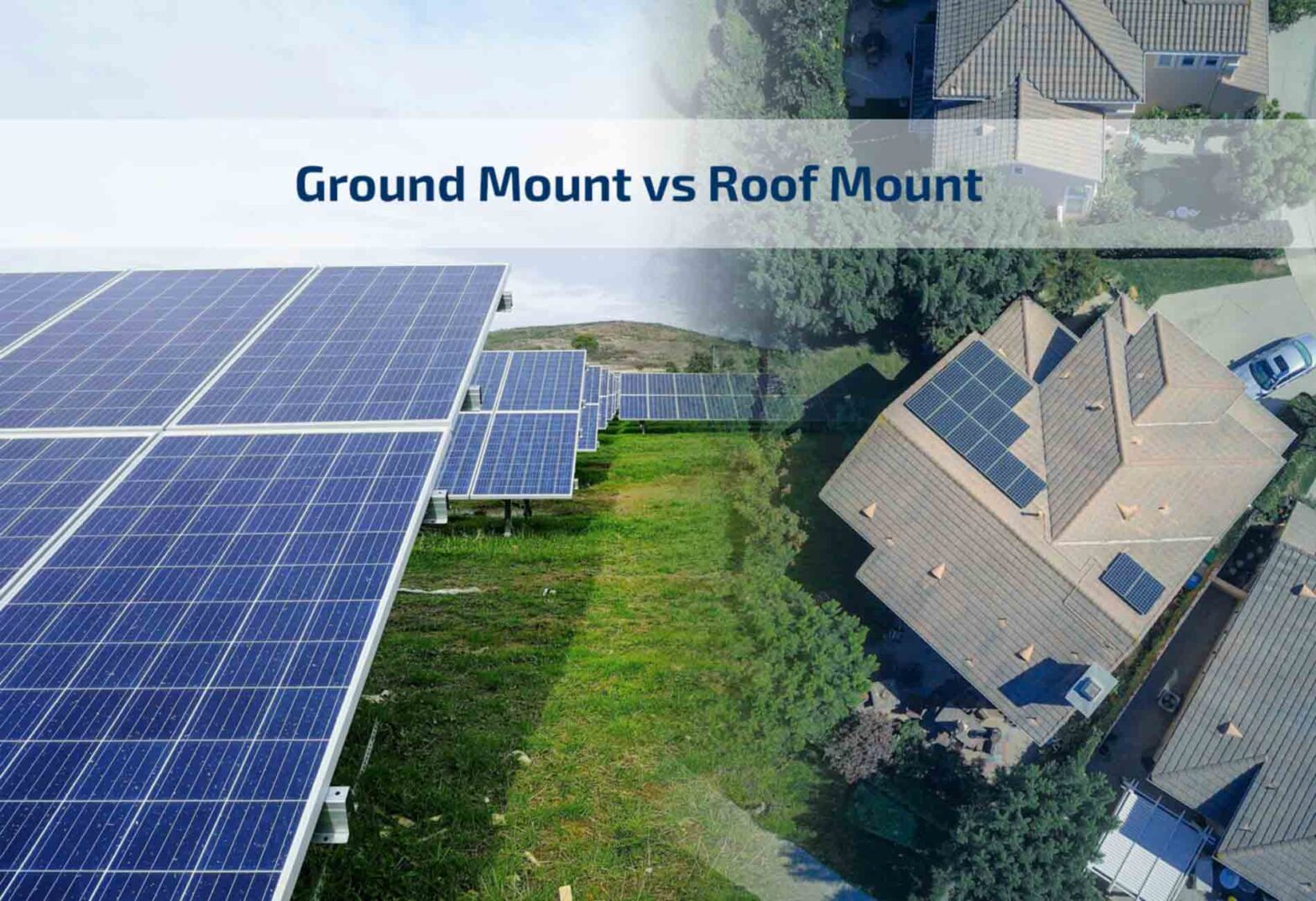Thinking about installing a ground-mounted solar system but unsure where to begin? You’re not alone. Businesses across India are turning to these practical ground mount solar solutions, from rural farms to industrial complexes.
India’s total solar power installed capacity as of February 2025 was 102.57 GW, with ground mount solar systems at 78.47 GW and rooftop solar systems at 16.66 GW (NSEFI). This shows that ground mounted solar projects are largely dominant in the country’s renewable energy space.
This is a comprehensive guide on everything you need to know in regard to these versatile ground mount solar solutions.
What Is A Ground Mount Solar System?
Ground-mounted solar energy systems have solar panels attached to mounted frames that rest on the ground rather than on roofs. Since they can be positioned anywhere on the property, they can capture optimal sunlight even when there may be limited or less roof space.
Unlike rooftop systems, the perfect angular positioning of ground mount solar panels enables them to generate more electricity efficiently. This means you get more power from the same number of solar panels.
Also Read: An Overview of Ground Mounted Solar Plants
Types of Ground Mount Solar Systems
Knowing various mounting options will allow you to choose a system suited to your needs among those defined by a balance between initial investment and long-term production and maintenance requirements.
- The most common and cost-effective systems available in the market today are fixed-tilt systems. Since they have no moving parts, these systems only maintain one constant angle year-round and only require minimal maintenance.
- Manual adjustment is possible in seasonal-tilt systems to achieve the best balance of the sun for any season of the year. The adjustments can increase annual energy yield by 4 to 8 per cent over fixed-tilt systems.
- The single-axis trackers track the sun’s movement from east to west and increase energy generation by 15-25%. The modules rotate around one axis, which is usually north-south, so that panels will track the sun throughout the day.
- Dual-axis trackers track the daily and seasonal sun movements in order to maximise output, but at a significantly higher cost. The systems typically yield 30-45 per cent more energy than fixed-tilt systems, but costs are 30-50 per cent higher.
Also Read: Module Mounting Structures for Ground Mount Solar Installations
Advantages of Ground Mounted Solar Power Plant
Ground mount solar systems do more than just generate power. They’re simpler to fix when broken, don’t get as hot as their roof counterparts, and work well for many years. These good points usually make up for the extra money you spend at the start when installing them.
– You can set ground mount solar panels at perfect angles to catch more sunlight and create more power. Unlike roof panels, you’ve total freedom to choose their exact position and direction.
– Solar panels on the ground get more air flowing around them. This extra air helps keep them cooler. When solar panels stay cooler, they work better and last longer.
– Ground mount solar panels are easier to clean and repair as you can reach them without the need to climb onto a roof.
– Systems are easier to scale than rooftop installations when more capacity is demanded.
– There are no roof structural concerns to be addressed, such as roof load capacity or potential damage.
Also Read: Ground Mounted Solar Panels vs Roof Solar Panels: Which Is Right for Your Property?
Things to Consider Before Installing Ground Mounted Solar Structure
Before installation, proper planning will ensure that your system performs optimally and will avoid costly mistakes, such as land requirements to positioning considerations that are location-specific to India.
Land Requirements
You will need around 30 to 40 square metres of unobstructed land for a typical 5kW ground mount solar system. The minimum required land is about 130 square feet per kW installation capacity.
Optimal Positioning in India
In India, south-facing panels typically generate maximum energy, but your specific location matters: For most of India, south-facing panels figure as the most productive source of energy, but your site location has a role to play here:
– For optimal performance, Northern India requires a 20-30° tilt angle with a south-facing orientation.
– For central India, orientations with a south-facing tilt angle of 20-28° perform best.
– To maximise energy production, a 14-21° tilt angle with a south-facing orientation is required for southern India.
Soil and Foundation Requirements
In order to have system stability and longevity, the right foundation is of the essence, and installation costs and structural requirements of your ground-mounted system are directly tied to the soil conditions.
– The mounting structure should be supported by soil with sufficient bearing capacity (at least 10 tons/m²).
– In order to be stable in different weather conditions, the foundation depth should be at least 1-1.5 metres.
– Waterlogging around the installation should be prevented by proper drainage systems.
– In most regions of India, structures should be able to withstand winds of 150-180 kmph, and hence, wind load capacity is important.
Cost Analysis
Ground mounted solar panels cost 10 to 20 per cent more than rooftop installations because ground mounting adds extra structure and needs to be prepared with the land. However, they can often produce more electricity due to optimal placement.
For standard fixed systems, the current costs in India range from ₹45,000 to ₹55,000 per kW and tracking systems cost up to 20 to 30% more.
Also Read: The Complete Guide to Understanding C&I Rooftop Solar System Installation Cost and ROI
How Are Ground Mounted Solar Panels Installed?
A smooth installation process needs to be planned and executed carefully, right from the initial site assessment up to the final commissioning, to make sure that your system does its best from the first day of operation.
- The site assessment determines land suitability, solar access and soil conditions to initiate the installation.
- Foundation installation is then conducted using concrete piers, ground screws or ballast systems based on soil type.
- For mounting structure assembly, the solar panels are attached to frames which are made from galvanised steel or aluminium. These frames are built to be strong enough to endure rain, wind, and snow that prevail in your location.
- During panel installation, workers use specific clamps along with fasteners to make sure the panels remain attached to the frame securely.
- Wiring panels together to enable electrical connection to inverters for power conversion.
- The performance and safety of the system are tested and commissioned before the system is handed over to you.
Regulatory Requirements
When you install solar panels in India, you need to follow certain rules. This helps you meet legal requirements, connect to the power grid, and get any available discounts or benefits.
– Before you start, you must ask your local government office if you can use your land for solar panels. They need to check if your property works for this purpose.
– For bigger solar systems, especially ones for businesses, you might need to get a report that shows how the solar panels will affect the environment around them.
– If you wish to net meter or avail of feed-in tariff benefits, grid connectivity approvals from your local Distribution Company (DISCOM) are required.
– To ensure that your installation meets all electrical and structural safety standards as per the Central Electricity Authority, you must obtain safety compliance certificates.
Maintenance Tips
Solar ground mounting structure makes it easier to perform regular maintenance of ground mount solar panels, which is essential to ensure optimal performance and extend the lifespan of your investment.
– Regular maintenance keeps them working their best and helps them last longer. Dust and dirt on the panels can reduce how much electricity they make by up to 25% in very dusty areas. So, you should clean the panels about 4 times a year.
– Make sure to cut down tall plants and weeds around the panels. Shadows from plants can block sunlight from hitting the panels, especially during early morning and late afternoon.
– A year-round structural inspection of the mounting hardware should be conducted to verify for loose bolts, corrosion or any signs of stress that will compromise system integrity.
– A qualified professional should be scheduled for an electrical inspection every year, to check connections, grounding systems and inverter performance, to prevent safety hazards and loss of efficiency.
– Implementing performance monitoring will allow you to track system output regularly and identify possible issues before they result in large production losses.
Frequently Asked Questions (FAQs)
What’s the difference between fixed-tilt and tracking systems?
Fixed-tilt systems remain stationary while trackers follow the sun, increasing energy production by 15-45% but costing 20-50% more.
Do I need special permission to install a ground-mounted system?
Yes, you’ll need land use permission, a possible environmental assessment, grid connectivity approval, and safety compliance certificates.
Which direction should panels face in India?
South-facing orientation is optimal across India, with tilt angles varying from 15-20° in southern regions to 25-30° in northern areas.
To Sum Up
Ground mount solar systems offer an excellent solution for those seeking energy independence with optimal positioning, easier maintenance, and impressive scalability. The initial investment delivers long-term benefits through increased energy production and system longevity.
So, if you’re ready to harness solar power tailored to your needs, get in touch with Enerparc and join others across India who’ve transformed their energy future with Enerparc’s ground mount solar solutions.






